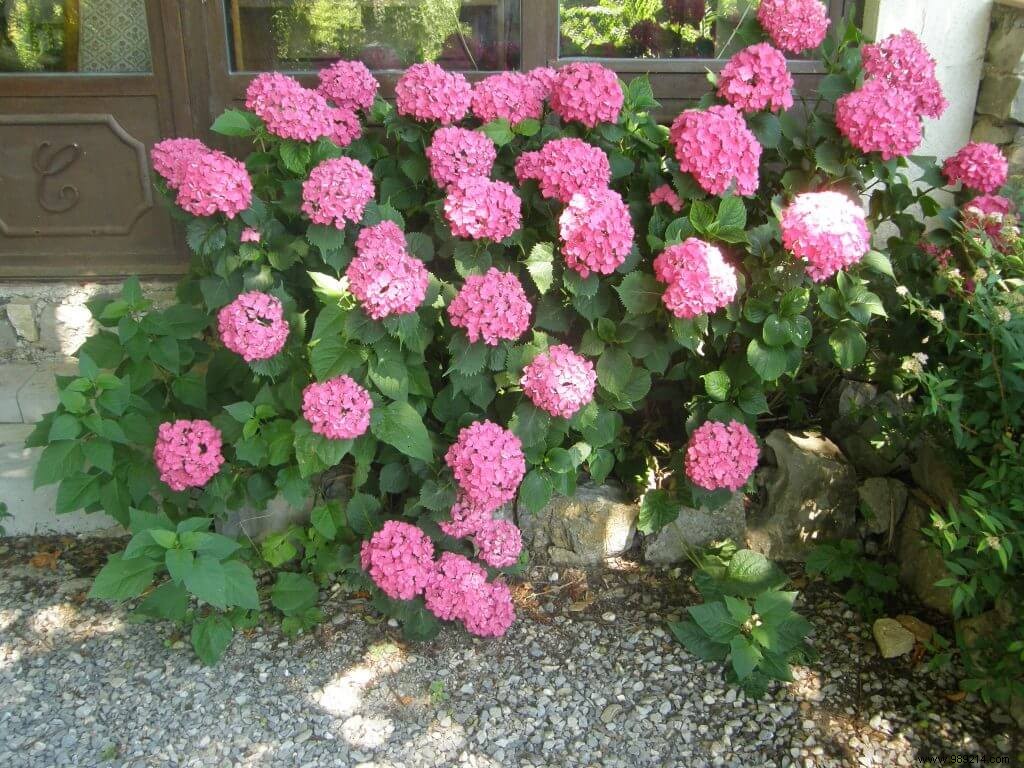The size of the hydrangea, both simple and the cause of many setbacks. Let's not lose our heads by cutting the wrong one.
Let's start with the pruning of the garden hydrangea , the one that makes big balls - sometimes almost flat! –Hydrangea macrophylla and all its varieties.

garden hydrangea
If the faded heads are to be removed at the end of winter, the young branches, brown, are to be left whole ! Flowering is said to be apical, that is to say that the flower bud is located at the end of the young branch. An unfortunate stroke of the secateurs to reduce the height of the hydrangea and the flowering is suppressed. Because it is the wood of the previous year that bears the flowers.
We take advantage of having the shears in operation to eliminate dead wood, and branches that are too frail. The old wood, the one that is gray and that carried the flowers last year, is to be cut just above a new beginning. We leave the young branches, brown in color, except for those that are too frail and/or badly placed.
The other hydrangeas :paniculata , (flower in panicle like a lilac), quercifolia (oak-leaved) arborescent , carves more easily; all the branches should be shortened at the end of winter because they flower on the wood of the year, that is to say on the branches to come. Like summer-flowering shrubs.

oak leaf hydrangea